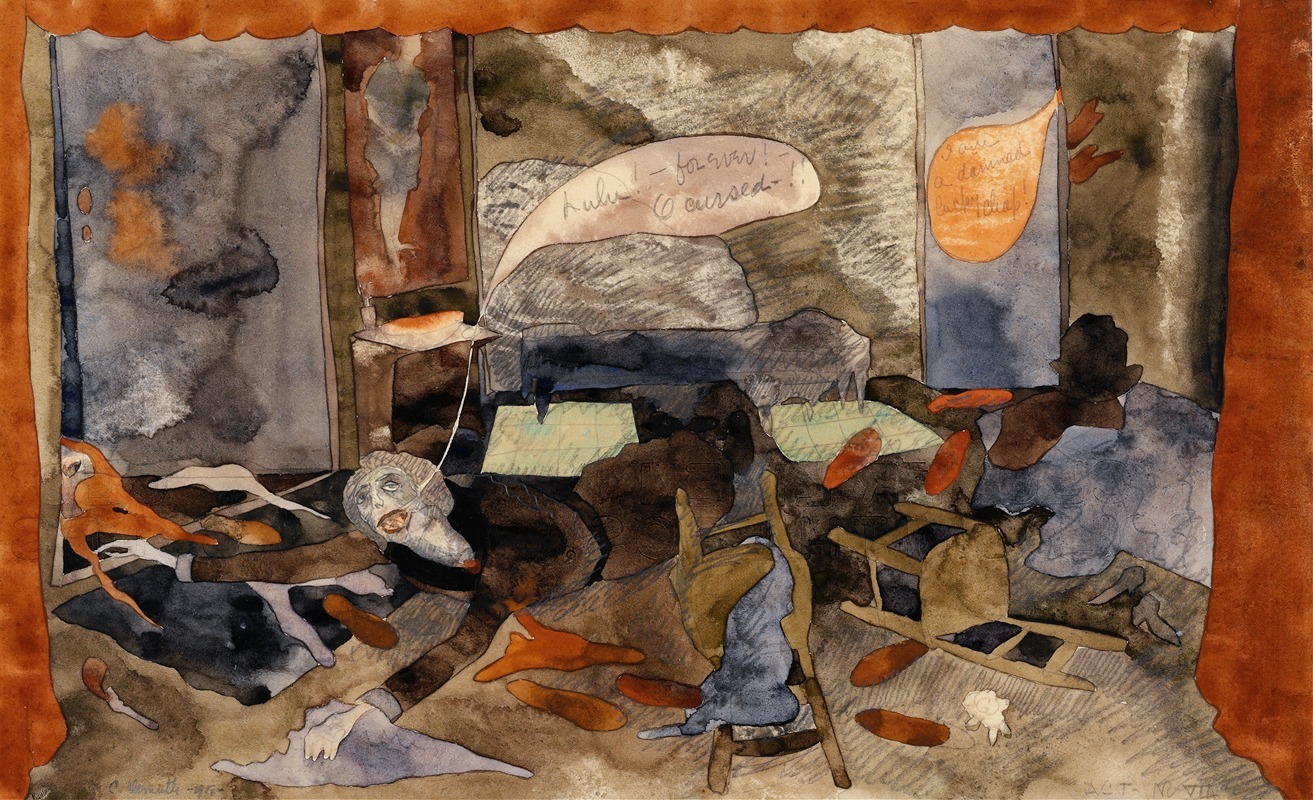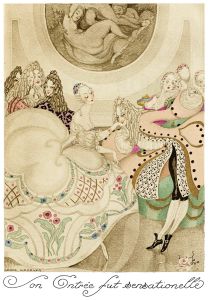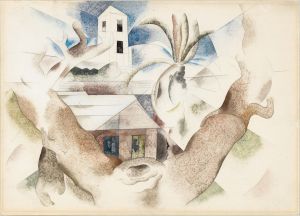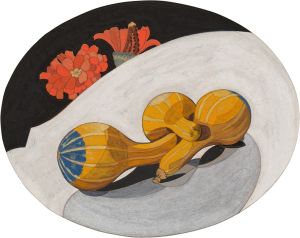
The Death of Countess Geschwitz
A hand-painted replica of Charles Demuth’s masterpiece The Death of Countess Geschwitz, meticulously crafted by professional artists to capture the true essence of the original. Each piece is created with museum-quality canvas and rare mineral pigments, carefully painted by experienced artists with delicate brushstrokes and rich, layered colors to perfectly recreate the texture of the original artwork. Unlike machine-printed reproductions, this hand-painted version brings the painting to life, infused with the artist’s emotions and skill in every stroke. Whether for personal collection or home decoration, it instantly elevates the artistic atmosphere of any space.
Charles Demuth was an American artist known for his contributions to the Precisionist movement, which was characterized by its focus on industrial and architectural subjects, often rendered with clean lines and a sense of clarity. However, Demuth's oeuvre also included works that explored themes of identity, sexuality, and modernity, often through a more personal lens. One such work is "The Death of Countess Geschwitz," which reflects his interest in these themes.
"The Death of Countess Geschwitz" is a watercolor painting created by Demuth in 1916. The painting is inspired by the character Countess Geschwitz from the German playwright Frank Wedekind's "Lulu" plays, specifically "Pandora's Box." These plays were known for their exploration of complex themes such as sexuality, gender roles, and societal norms, which resonated with Demuth's own interests and experiences as a gay man in early 20th-century America.
In the painting, Demuth captures the dramatic and tragic essence of Countess Geschwitz, a character who is deeply in love with the protagonist, Lulu. Geschwitz is portrayed as a devoted and tragic figure, whose love for Lulu ultimately leads to her demise. Demuth's depiction is both poignant and expressive, utilizing his skill in watercolor to convey the emotional depth of the character. The use of color and form in the painting reflects Demuth's mastery of the medium, as well as his ability to convey complex emotional narratives through visual art.
Demuth's choice to depict Countess Geschwitz can be seen as a reflection of his own experiences and the societal challenges faced by individuals who did not conform to traditional gender and sexual norms. The painting can be interpreted as a commentary on the struggles and tragedies that often accompanied such non-conformity during Demuth's time. It also highlights Demuth's engagement with contemporary cultural and artistic movements, as well as his interest in European literature and theater.
"The Death of Countess Geschwitz" is part of Demuth's broader body of work that often explored themes of identity and modernity. His paintings frequently incorporated elements of both realism and abstraction, allowing him to convey complex narratives and emotions. This particular work stands out as an example of how Demuth was able to blend his personal experiences with broader cultural themes, creating art that was both deeply personal and universally resonant.
While not as widely known as some of his other works, such as "I Saw the Figure 5 in Gold," "The Death of Countess Geschwitz" remains an important piece within Demuth's oeuvre. It exemplifies his ability to engage with contemporary themes and his skill in using watercolor to create evocative and emotionally charged imagery. Through this painting, Demuth not only pays homage to a significant literary character but also reflects on the broader societal issues of his time, making it a significant work in the context of early 20th-century American art.


















